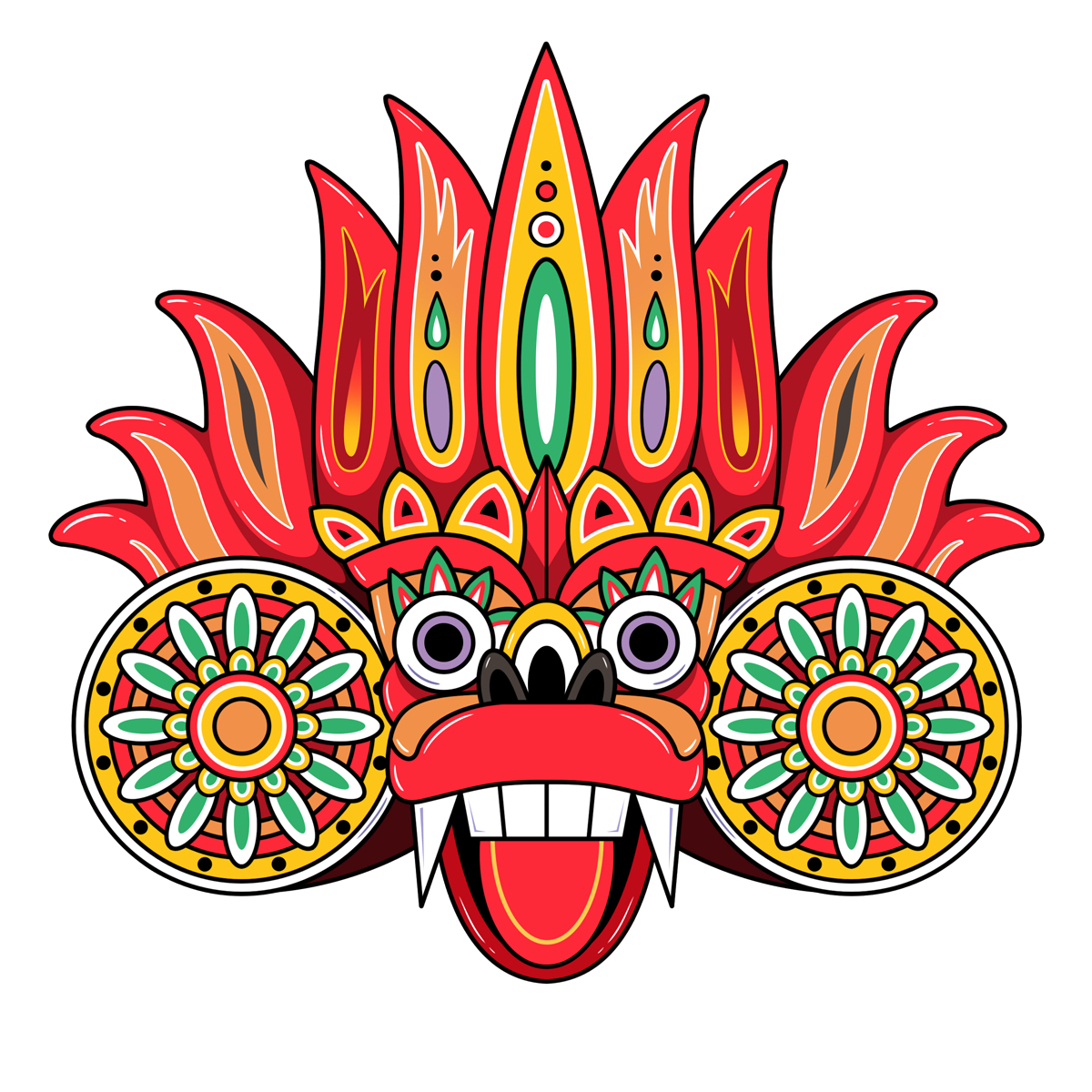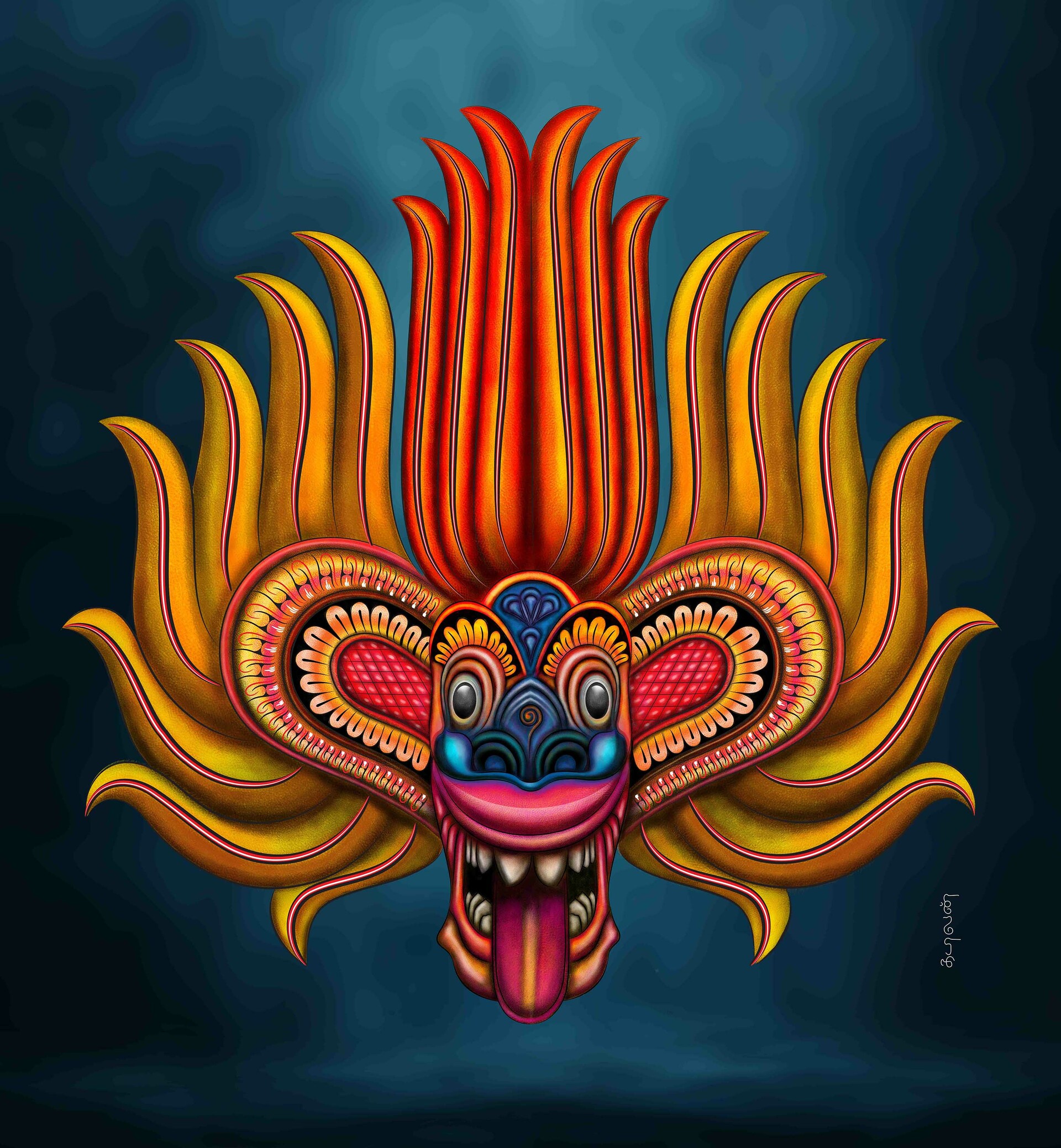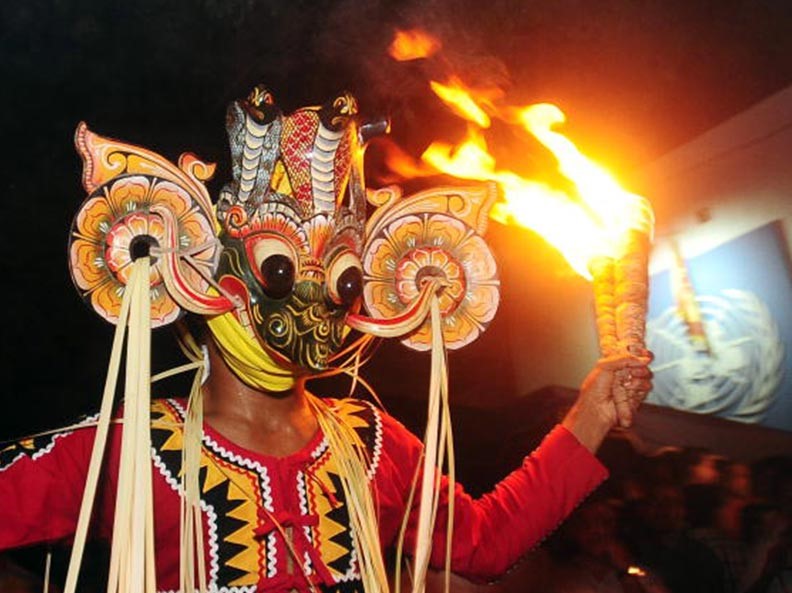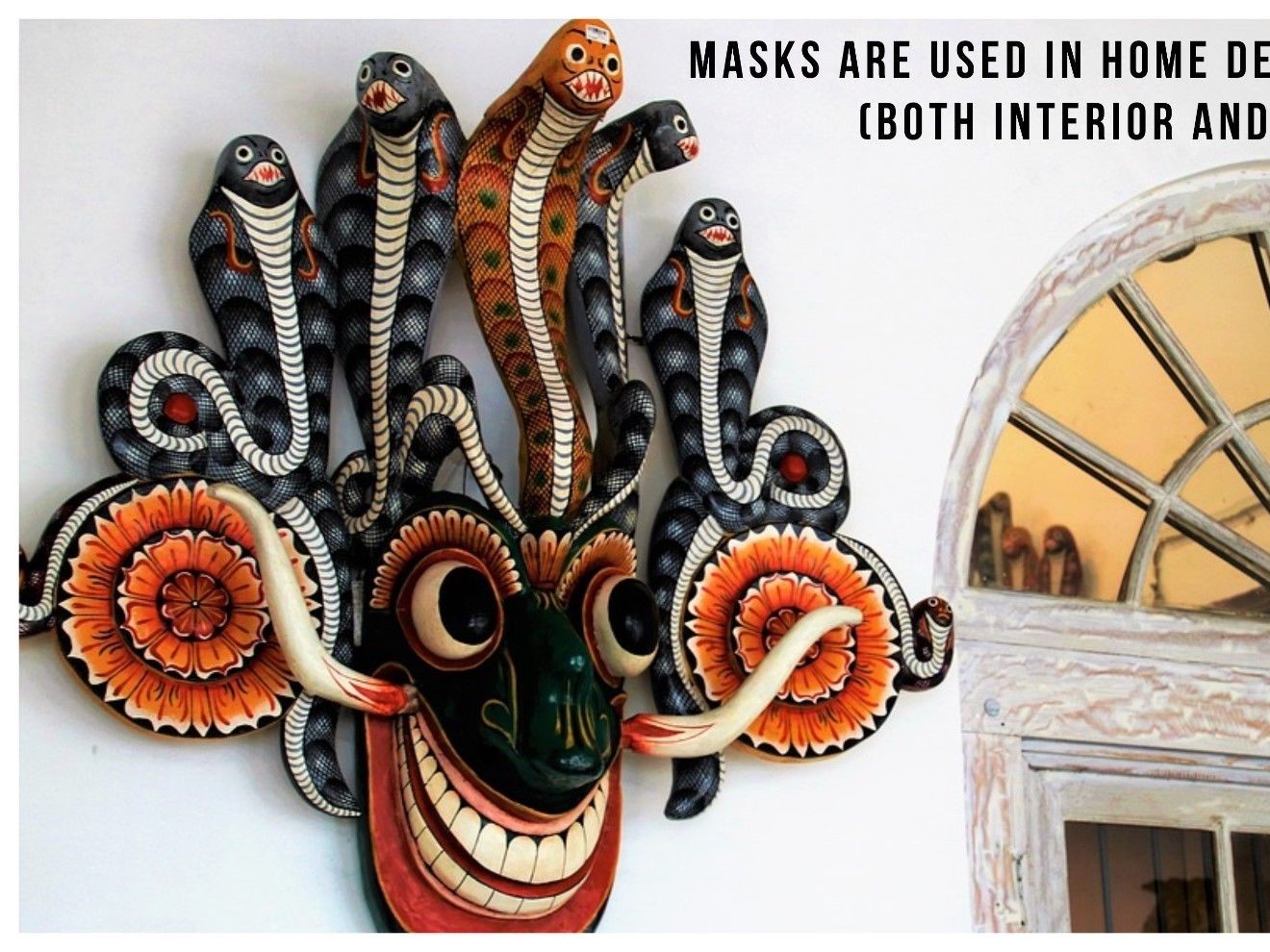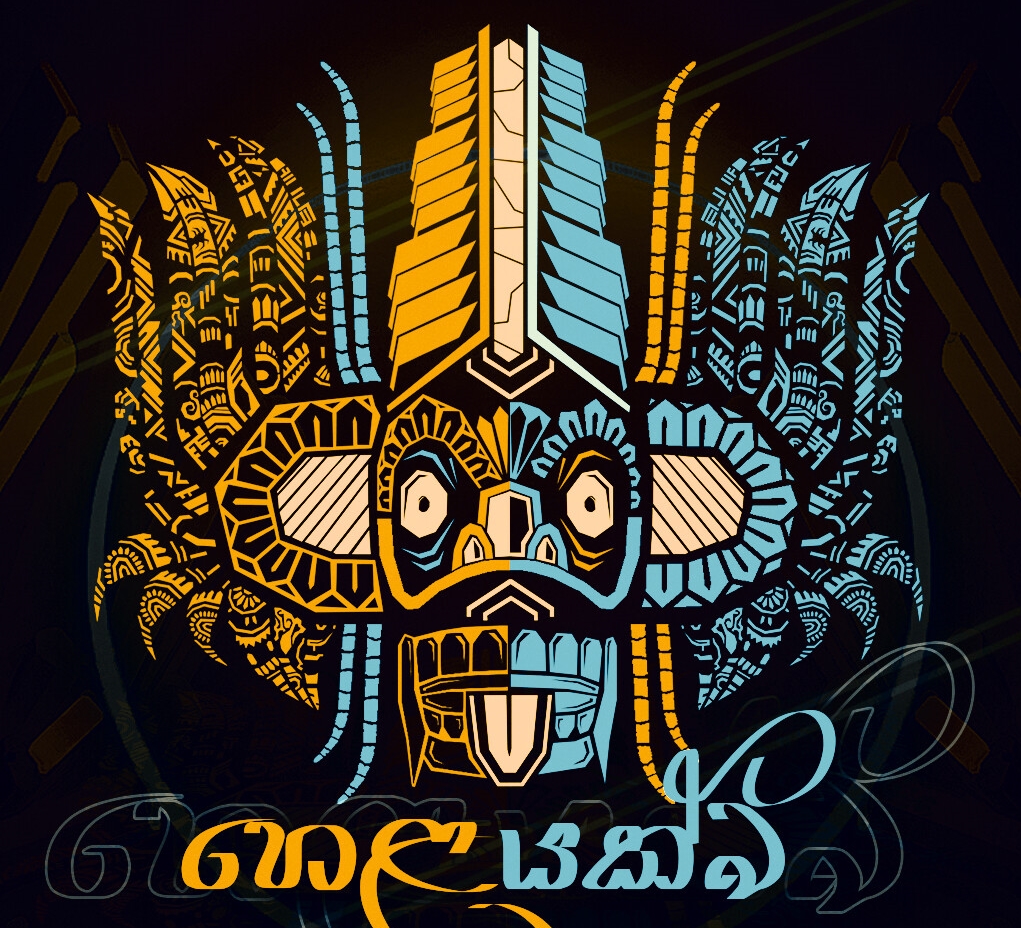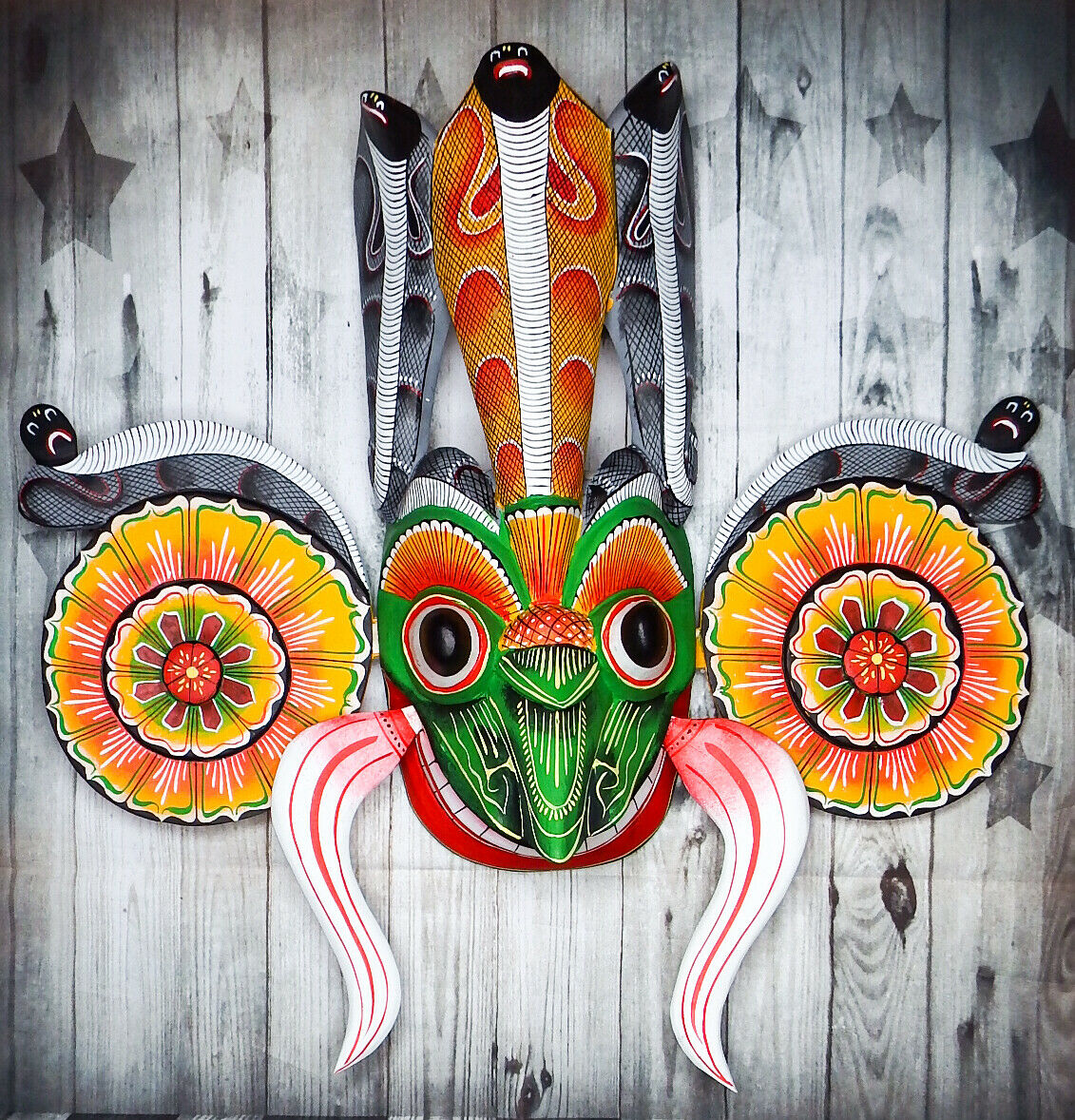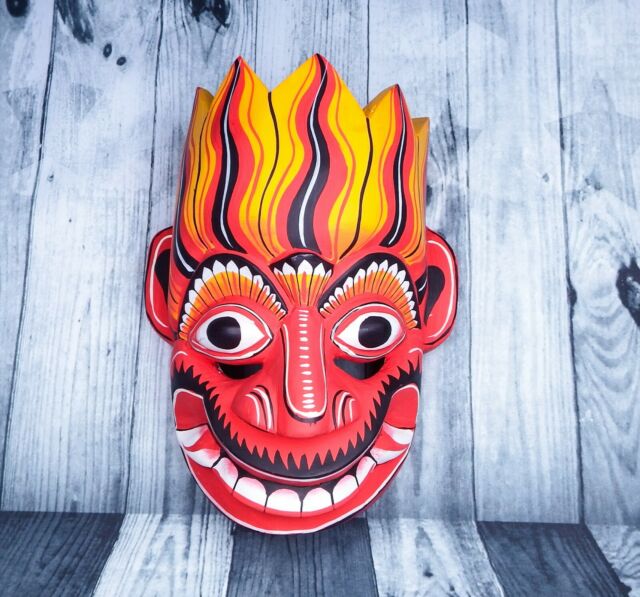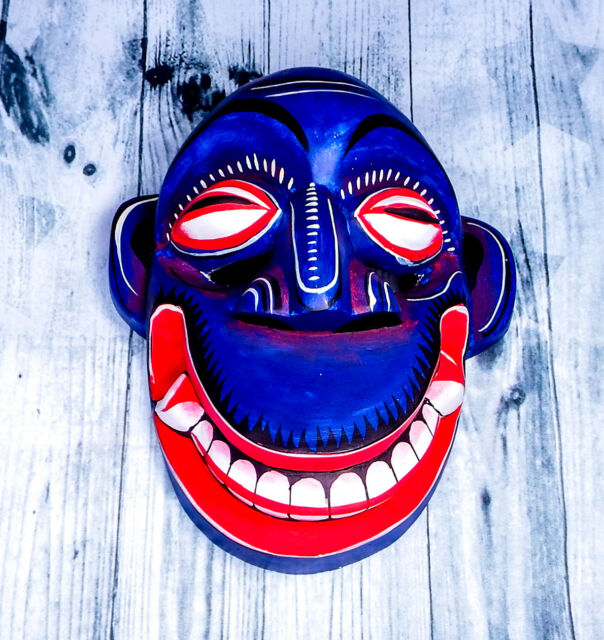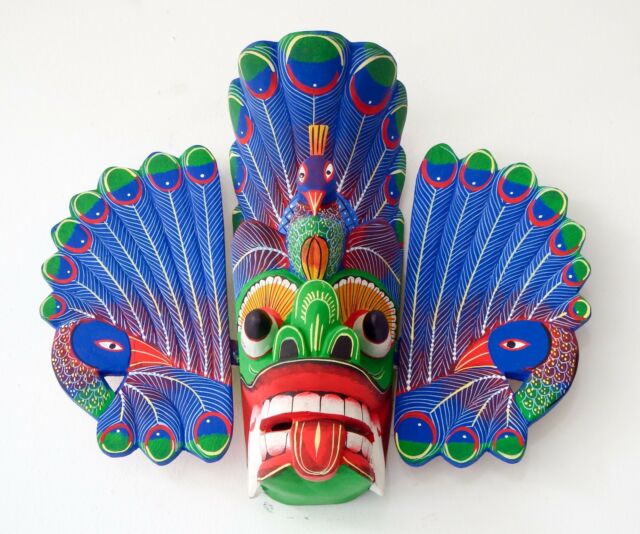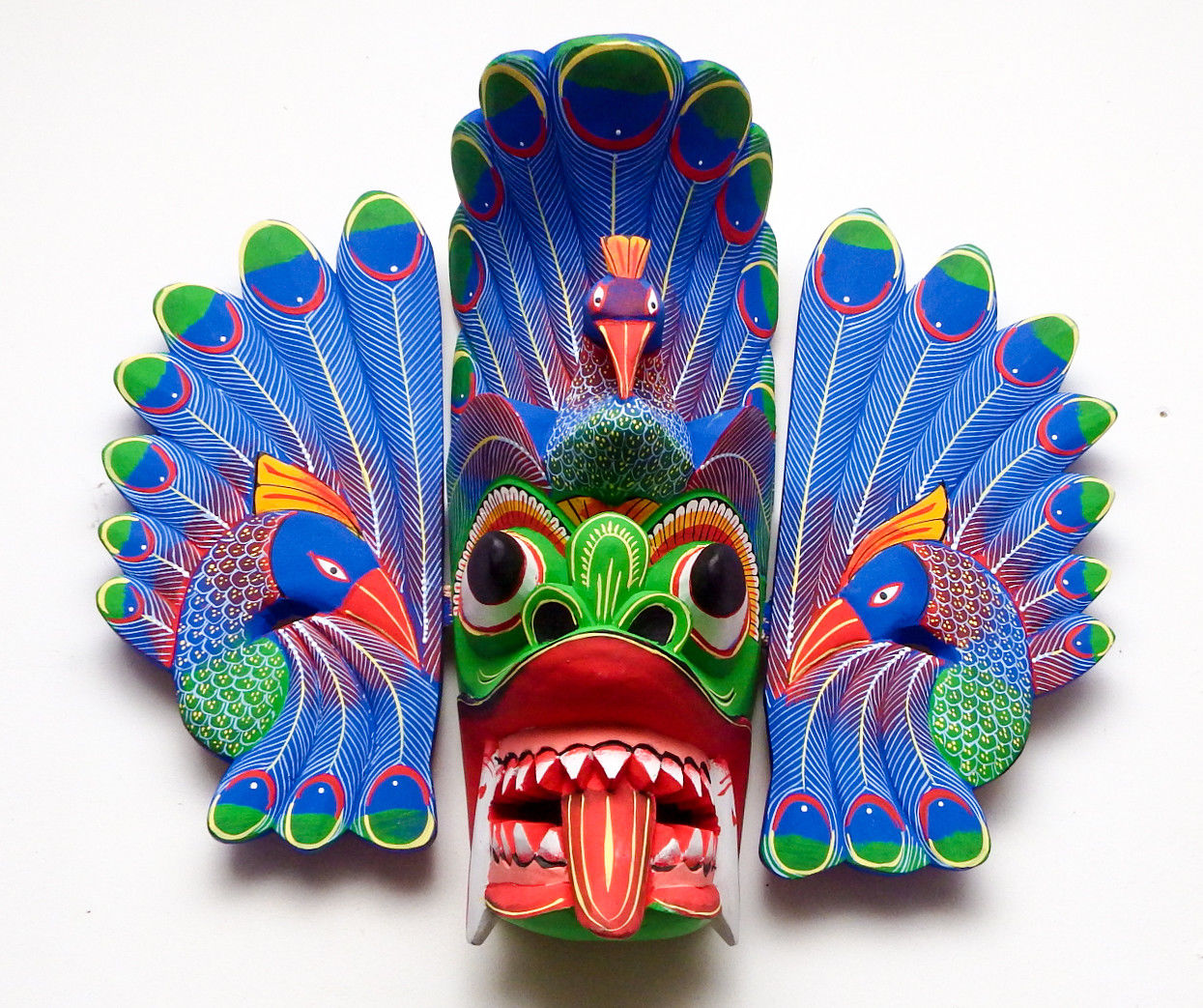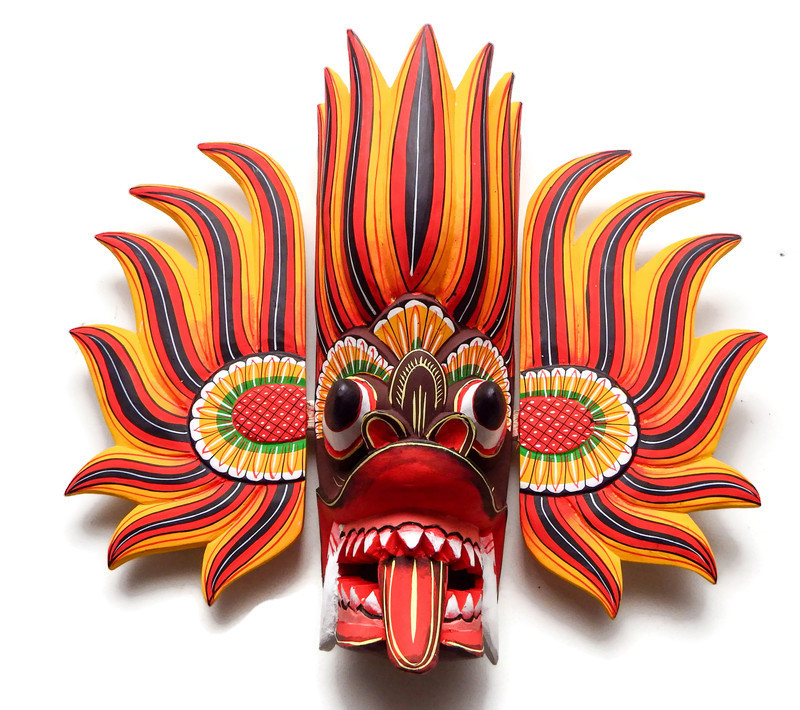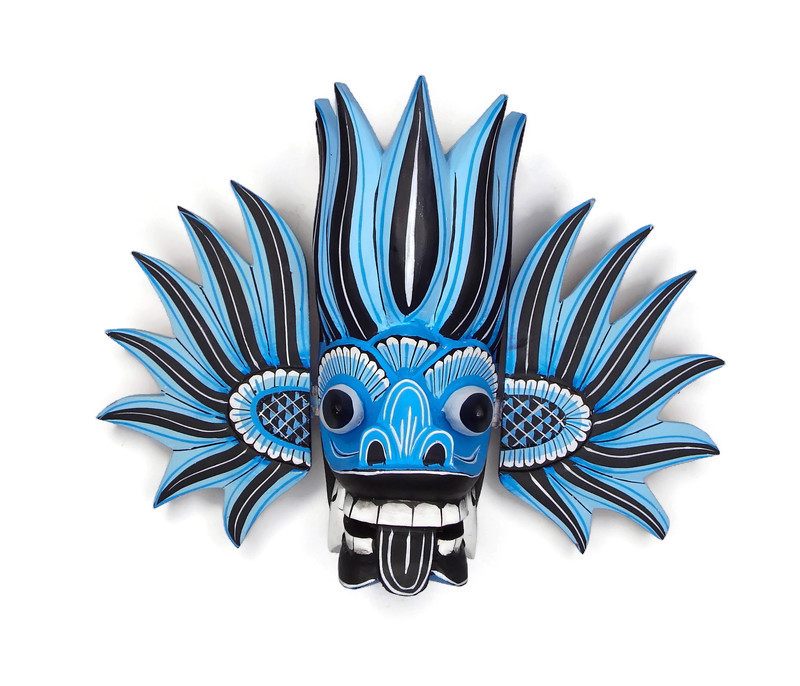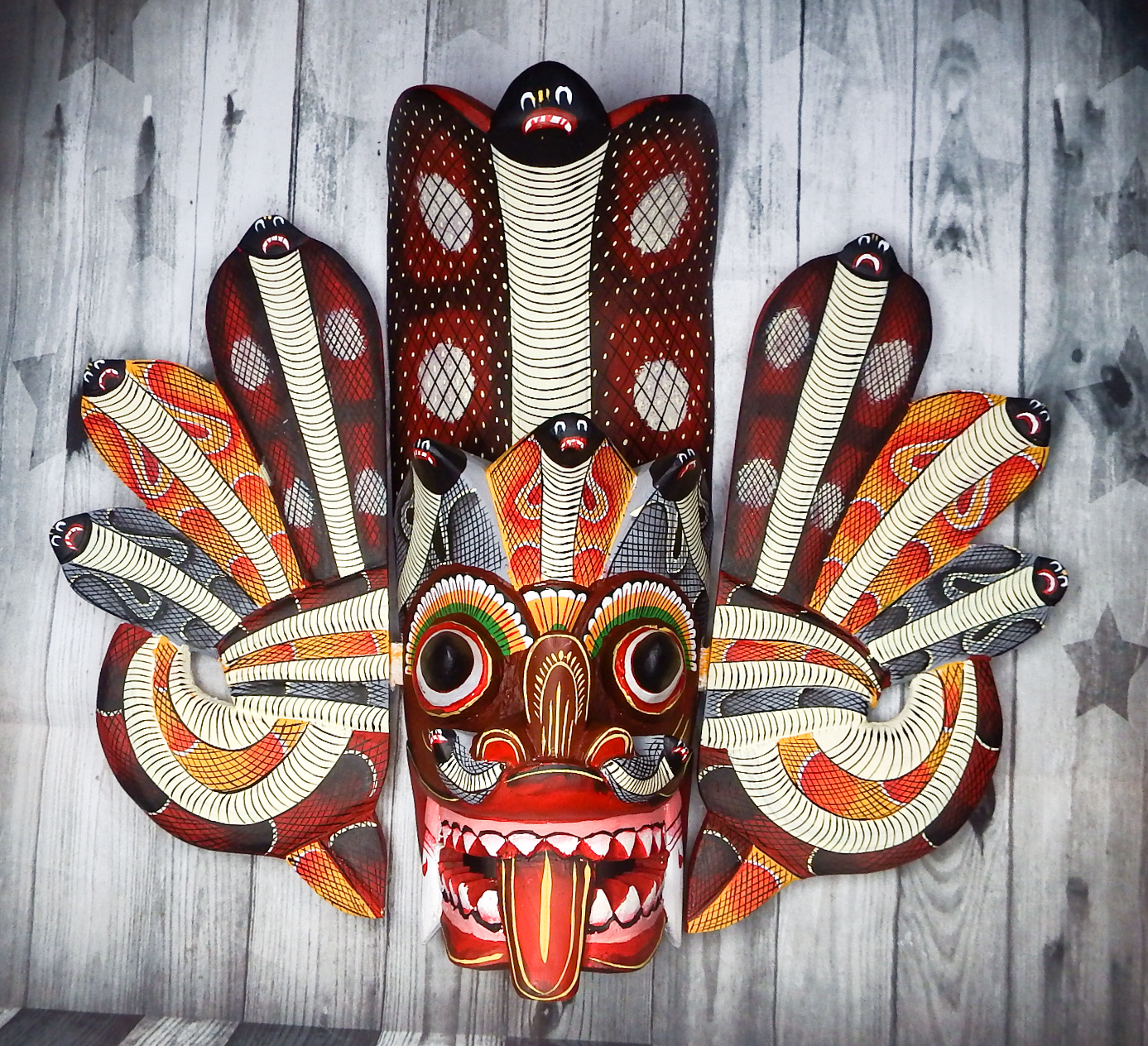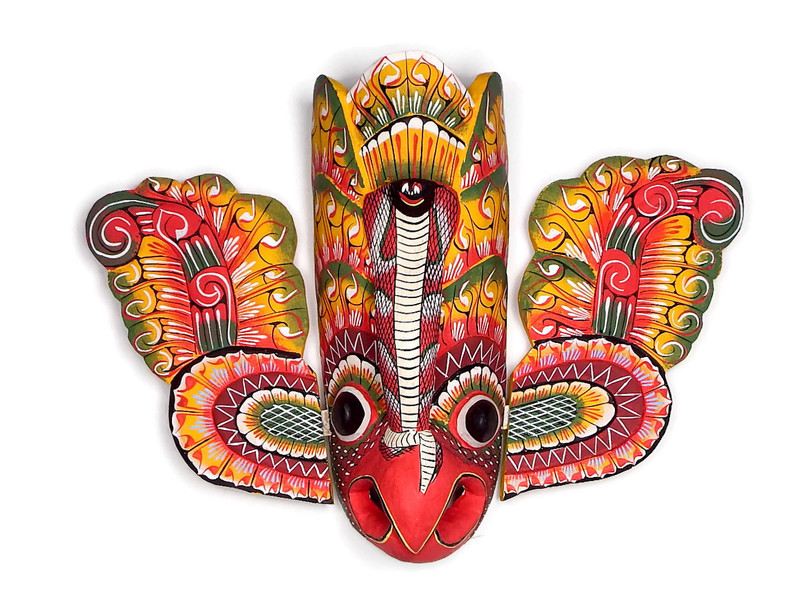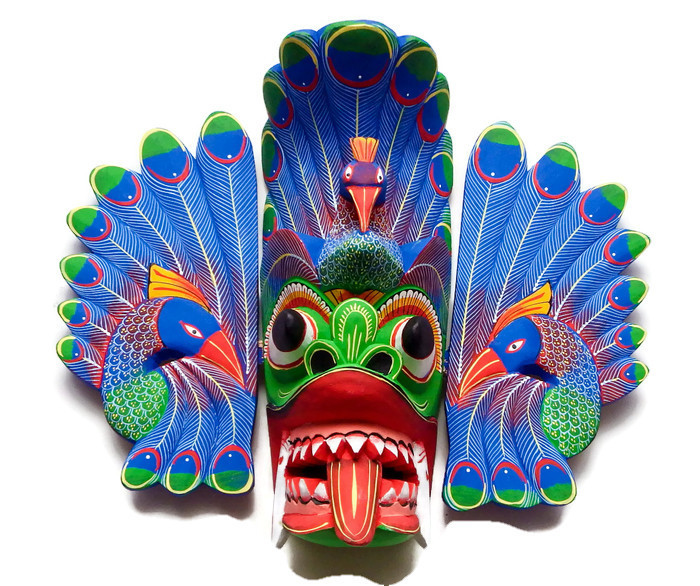Making a Raksha Mask
As these rituals of our ancestors are fast diminishing from our present society, these masks are now used for decorative purposes or kept as exhibits in private collections by both locals and foreigners. Ambalangoda — a coastal town in the Southern Province is still well-known for traditional mask carving and mask performances.
Mask carving is quite a complex process which requires a great deal of skill and patience.
The timber used for the purpose is known as vel kaduru — a tree which is found close to paddy fields or marshy lands.
The manner in which a small tree log becomes a mask the process is quite brilliant. The process begins when the tree trunk is chopped into small logs — generally into four, six or eight inch logs, depending on the size of the mask. The wooden logs are then kept for drying in the sun for a couple of days to take the sap out.
These are the ingredients and tools that are needed to make the masks. Kaduru wood, a vice, cross cut saw,hand axe, various types of chisels, a ruler, a mallet, a whet-stone, abrasive materials, A pair of compasses, an angle, a ruler and a plumb rule, Brushes, colours, resin, oil and clay
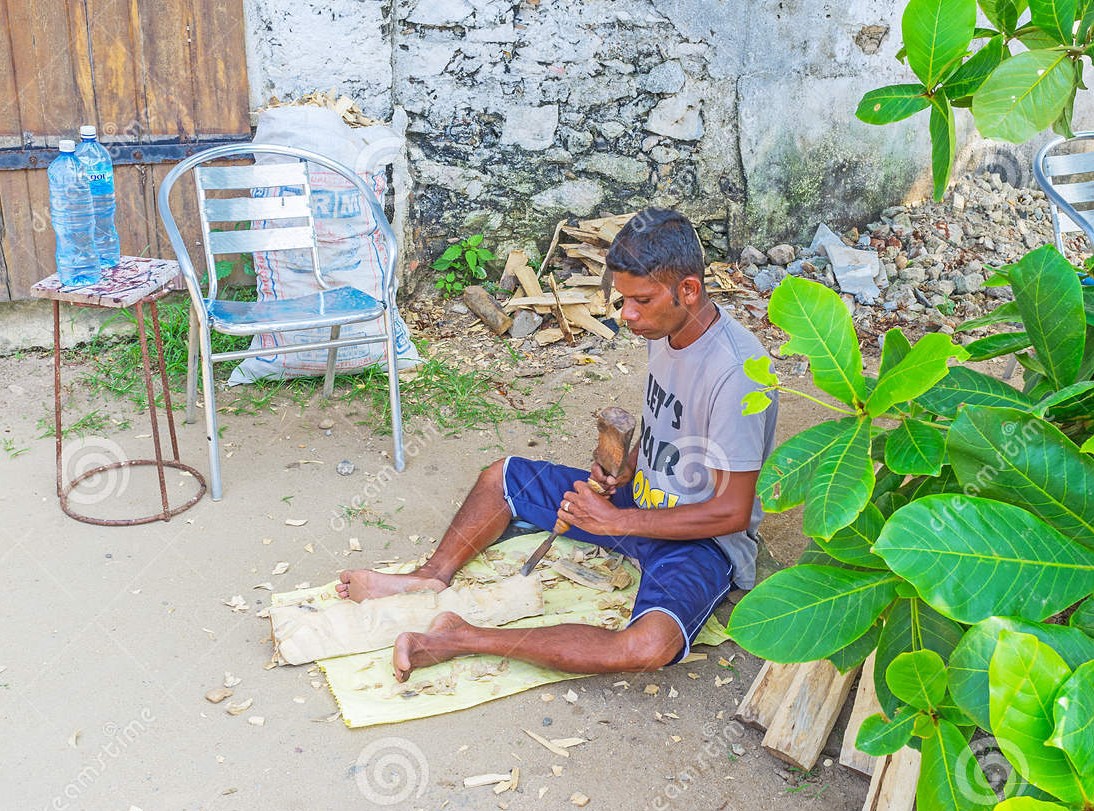
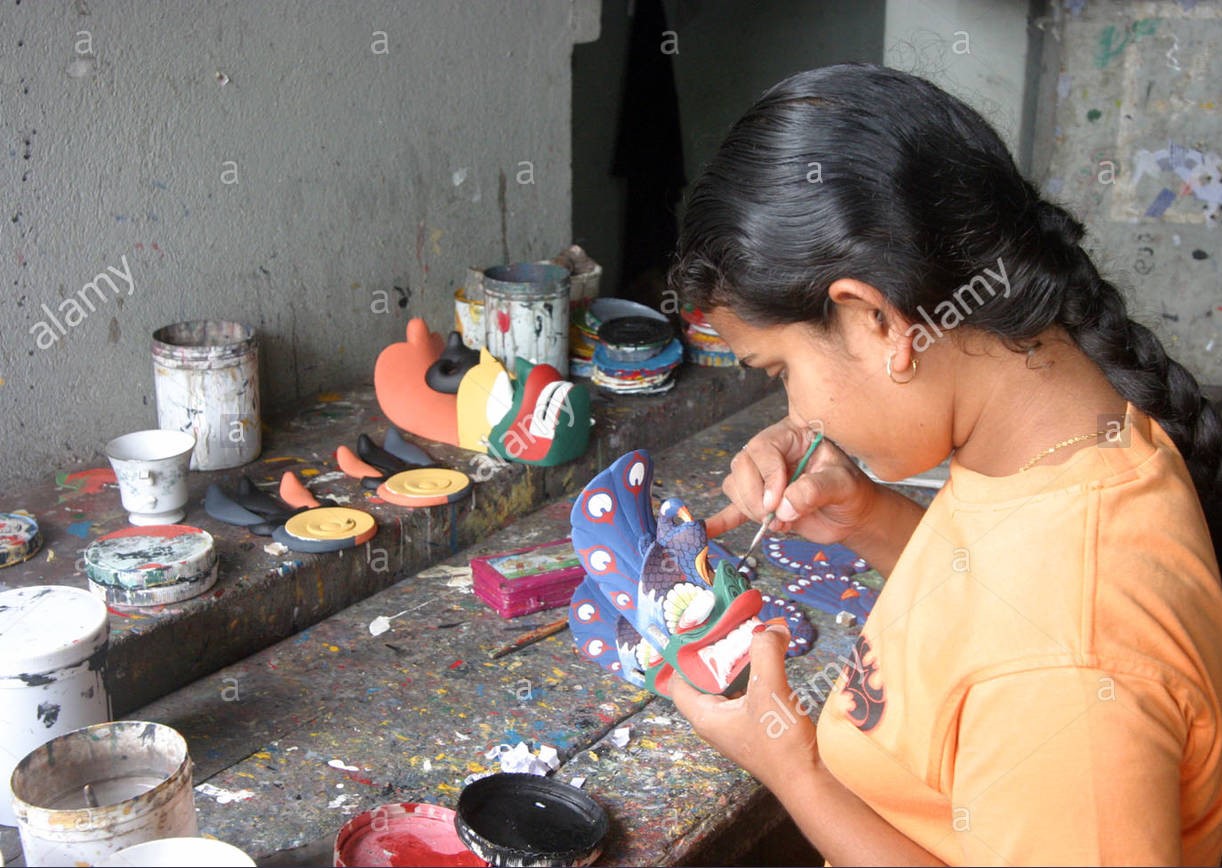
At the beginning, the outline of the mask is drawn on the log using the hand axe. Afterwards they are kept on a stall by the fireplace for a few days for seasoning. This is important to keep the masks free of insect attacks.
Carving of the mask begins afterwards. Carving is done using the chisel. During the carving process the log is transformed into an intricate design by the carver with various facial features and expressions to create the characters that come in folklore such as Nonchi akka and Lenchina, or the mask figures used for various healing rituals.
Once this is done, the masks are kept in the sun for drying for a few days before smoothening its surface with sandpaper.
After this point on, the artists who are specialised in colouring/drawing the masks, take over. They first apply a base paint on the mask — mostly a yellow shade before painting the masks using various other colours to suit different characters.
The traditional Sri Lankan mask is hand carved by an edura, or exorcist, out of local wood and polished using certain plant leaves. Next it is painted with natural organic and mineral based pigments. Usually, white colour comes from clay, green from leaves, blue from fruits, yellow from yellow pepper, black from charred cotton and red from red bricks or clay. A sealant comprising of beeswax is then applied to protect the colours before the artisan makes the final touch ups. Facial hair is mimicked through the use of elephant hairs, and monkey skin is also sometimes used to give that authentic velvety skin-like feel. When not mass-produced, each mask is unique, intricately designed and evidence of incredible attention to detail.
Ears of the masks are made separately and these are attached to the masks in the end.
In summary, Mask making is an interesting process…
Raksha masks are made from local Kaduru wood which grows in rice paddies and swamps.
Kadura wood is transformed into a mask by craftsmen who:
- Dry the wood in the sun.
- Chop and chisel the wood into the required shape.
- Cure the wood for seven days over a smoky hearth to protect it from insect attacks.
- Carefully smooth and craft the facial expressions of the characters in the wood.
- Apply brightly coloured paint and intricate patterns to create a theatrical masterpiece
Given below the step by step guide on Mask making process.
- A good Kaduru tree (Strychnine tree, Strychnos nux-vomica, also known as poison nut. It has soft, easy to carve wood) is selected and felled.
- The trunk dried to drain the sap and then when completely dry measured and cut into pieces.
- The basic shapes of the masks are carved using a mallet, chisels and various other tools and in accordance to measurements in ancient scriptures
- The wood is then smoked on racks in a large hearth to prevent future damage from insects.
- The seasoned wood is carved into elaborate faces and expressions and smoothed.
- Afterward the masks are painted in colours as mentioned in the scriptures with paints treated in the traditional way for durability.









